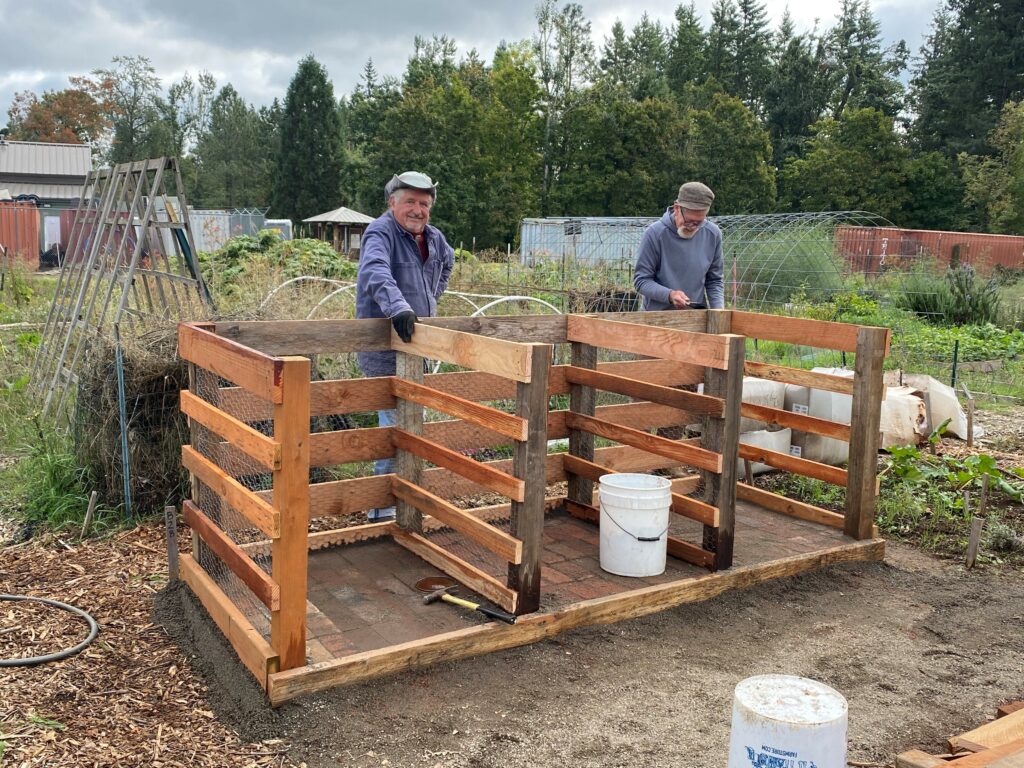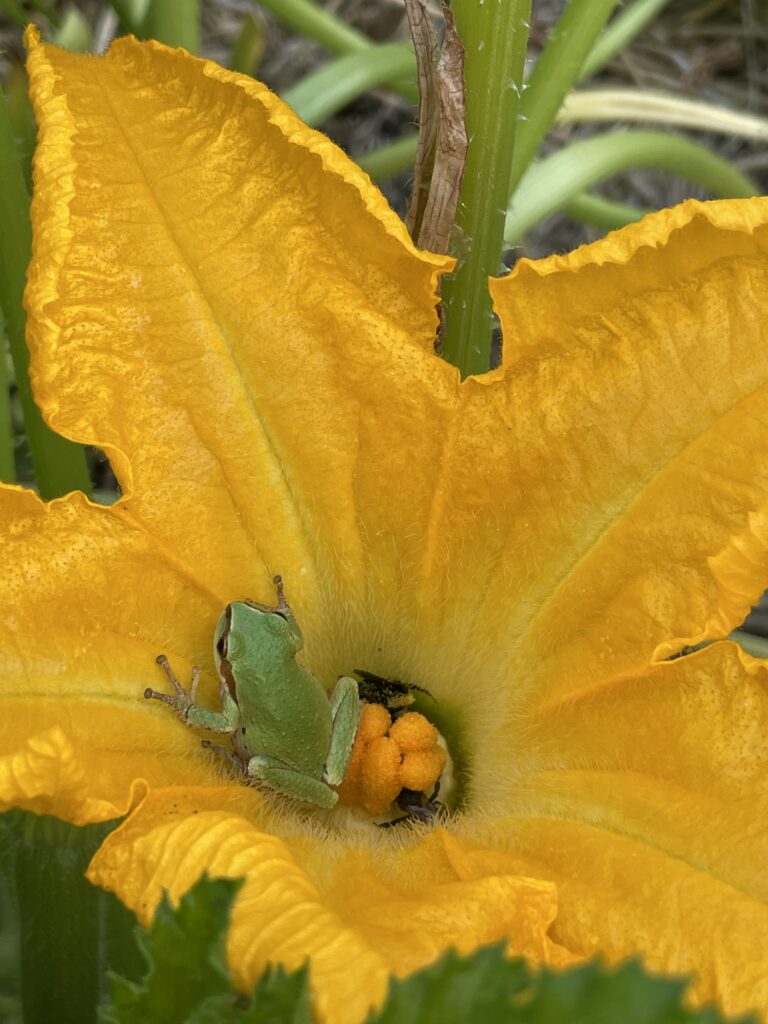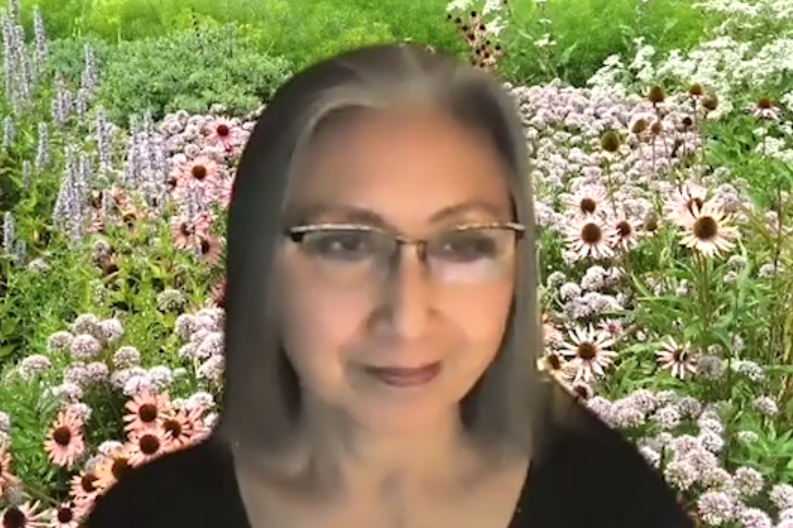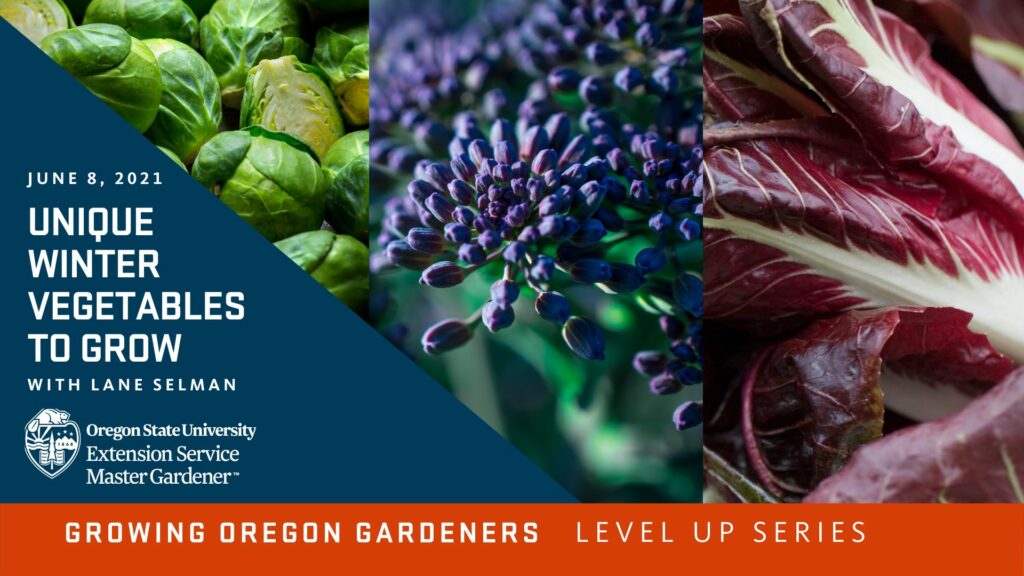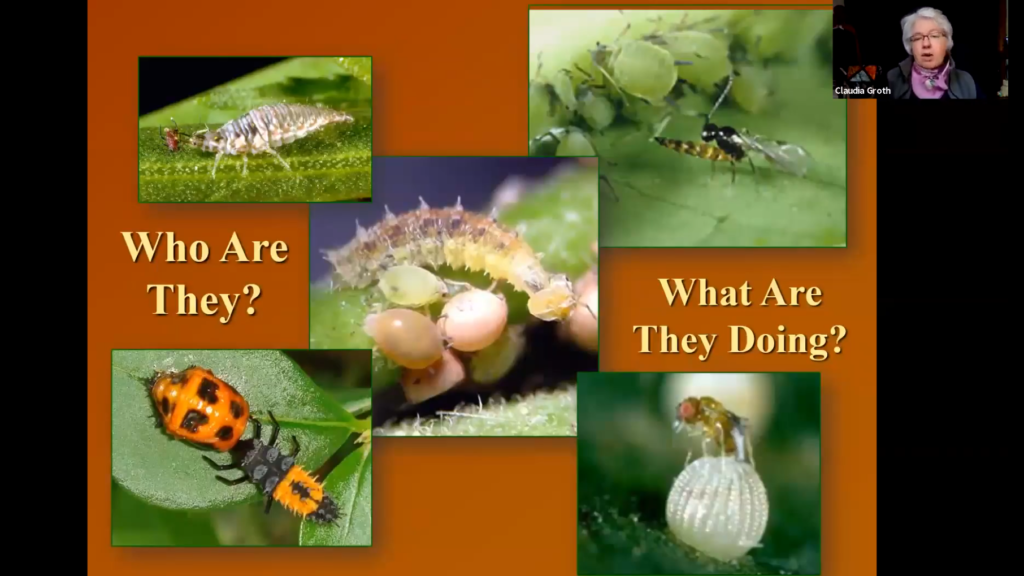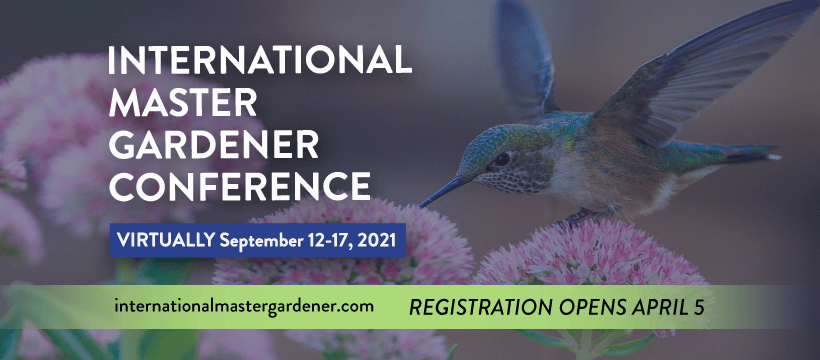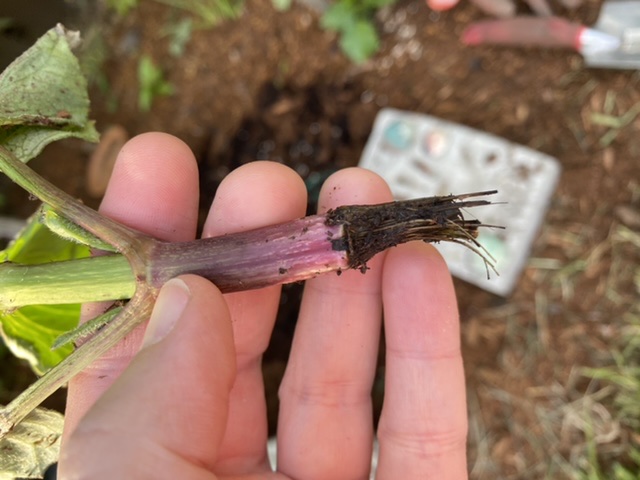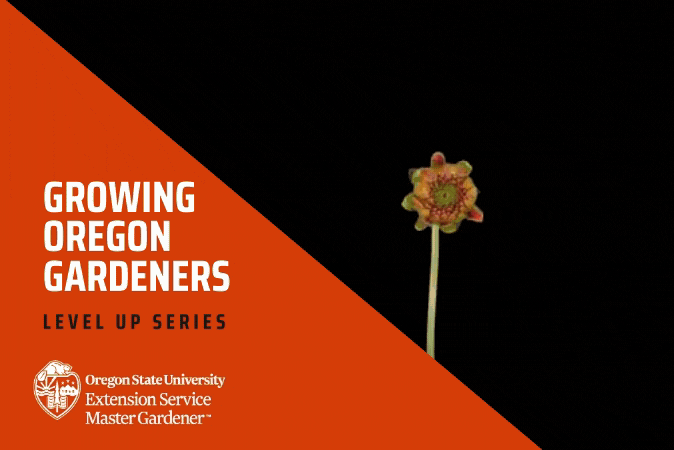Winter garden
the moon thinned to a thread,
insects singing.~Matsuo Bashō
Year closes with hearty gratitude!
As winter approaches and the year comes to a close, we extend our hearty gratitude to all our metro area OSU Extension Service Master Gardener volunteers, for your commitment to serving our communities as garden educators. In the midst of such challenging times, you have continued to serve by guiding and educating neighbors in sustainable gardening practices, answering gardening questions online, serving on the state-wide, metro area and/or county association’s diversity, equity and inclusion advisory groups, growing thousands of pounds of produce for donation to area food banks, providing community members with seed kits, creating and building educational signage, kiosks and compost bins, plus reaching thousands of Oregonians remotely through educational webinars. Kudos to one and all!
Our gratitude extends further…
We are truly grateful to OSU Extension Office Specialists Catalina Santamaria and Jenifer Halter for their valuable support to our metro area Master Gardener Program.
As many of you are aware, Jenifer has been supporting Master Gardeners since she joined the Washington County Extension office five years ago. We are delighted that since this fall, Jenifer is also providing administrative assistance to the metro MG program.
Catalina and Jenifer provide attentive service to both clients and Master Gardeners and take care of so many vital behind-the-scenes details for our MG program. We are fortunate to have both as part of our metro MG team and extend our utmost thanks for all they do!
2022 Master Gardener Training Applications Being Accepted
We are busy making preparations and eagerly looking forward to our 2022 metro area OSU Master Gardener Training. State-wide the Master Gardener Program has updated and redesigned how we deliver the program. It is reflective of the community’s needs for flexible learning and volunteer opportunities to serve as a garden educator. Training will be a hybrid format with online courses and hands-on outdoor workshops in the garden!
Applications are now being accepted! If you know anyone who loves learning about gardening and has a desire to share their knowledge with the community as a garden educator, please direct them to our ‘Become a Master Gardener’ webpage to apply. Applications are being accepted through December 31, 2021.
Sign up to be a Grow This! Oregon Garden Challenge Champion in 2022
Love to grow veggies? Master Gardener volunteers are needed to provide advice for participants of the Grow This! Oregon Garden Challenge.
The details of the Grow This! Champion program:
- Must be a current Oregon Master Gardener volunteer (or a Master Gardener representing a county demonstration/educational garden).
- Sign up today (as of 1/10/2022 applications are still being accepted). When signing-up indicate that you are a Master Gardener when asked about your gardening experience.
- You will be mailed 5 seed packets free of charge (cilantro, green onions, kale, mesclun lettuce mix, zinnias) to plant in your garden.
- Must agree to give feedback on your growing process and results at least once—but as often as you want—during the Challenge. Feedback could include suggestions, comments, challenges and solutions, stories, photos, drawings or videos that we can share with others (with or without your name). You will receive an invitation to join our private discussion group—just for Master Gardeners—which will have monthly prompts and requests for your feedback.
- Report your active time spent on this project as Master Gardener volunteer hours (report as ‘community science’).
Hope you are able to join in!
Questions? please reach out to Brooke Edmunds, OSU Extension, brooke.edmunds@oregonstate.edu
Metro area Master Gardeners Awarded Director’s Coins

OSU Extension Service Director Dr. Ivory Lyles recently visited the Washington Co. Extension office as part of his tour around Oregon during his first 100 days. The meet and greet with Extension staff and stakeholders also included Dr. Lyles and Regional Director, Angela Sandino, awarding metro area Master Gardeners Susan Albright, Claudia Groth, and Sue Ryburn with OSU Extension Director’s Coins. The coins were presented in recognition of their valuable contributions towards the mission of OSU Extension and the Master Gardener Program.
Congratulations Claudia, Sue and Susan! We are grateful for dedicated service and many contributions.
Susan Albright
- For 10
Claudia Groth
- Since 1989, Claudia Groth has provided unwavering community service as an OSU Master Gardener. She has taught innumerable classes for the metro area Master Gardener Program. She is a sought after instructor who travels the state presenting to other county Extension programs, along with presenting engaging, research-based garden information to the community-at-large. As a leader, Claudia guides and encourages her fellow Master Gardeners and association members to support the statewide and metro Master Gardener Program, with educational outreach and financial support. Claudia is steadfast in her efforts extolling the value of the Oregon State University Extension Service Master Gardener Program.
Sue Ryburn
- As an OSU Master Gardener
,for nearly 10 years, Sue Ryburn holds garden education at the forefront of her service. Sue was instrumental in the establishment of the Washington County Master Gardener Association’s Jenkins Estate Learning Garden and the Education Garden at PCC Rock Creek. Sue has created and delivered stellar educational presentations on a range of gardening topics through the association’s “In the Garden Series.” Sue consistently looks beyond the boundaries of the association to establish valuable community partnerships, with like-missioned organizations.
OSU Master Gardener’s Book, Going to Press
We are delighted to share exciting news! Fellow OSU Master Gardener, Elizabeth Price, has written a book ‘Native and Ornamental Conifers of the Pacific NW’ that OSU Press will be publishing in the spring of 2022.
The book is organized around jargon-free charts that guide the reader to species identification. Each chart is a photographic matrix of the key features of a group of genera or species, allowing for side-by-side comparison. The charts are preceded by material on the characteristics, botany, and natural history of each group of conifers, all of which is supported by original photographs. Research across many disciplines is blended with direct observation and personal experience, creating a book that goes beyond identification and is both rigorous and engaging.
The book is an outcome of the outstanding conifer ID workshops that Elizabeth has led, over the past 10 years, for the metro area MG Study Group. It will serve as such a valuable resource for anyone wanting to expand their knowledge of conifers in the Pacific NW. Look for the book, this coming spring, via the OSU Press Catalog.
Gather
Last month, did you miss the screening and panel discussion of the film Gather? Good news! There are still opportunities to view the film and the informative, post film, panel discussion focused on Native American resilience, plants, and the renaissance of Native food systems.
The film is available for viewing via these streaming services:
- Amazon
- iTunes
- Netflix
- Kanopy – If you have a public library card or are a part of a University, you most likely have access to the online streaming service Kanopy, where you can watch it for free.
A recording of the post film conversation featuring Dr. David Lewis and Dr. Samantha Chisholm Hatfield, is posted on the OSU Master Gardener ‘Culture of Gardening’ website. The website hosts many stories of gardeners growing plants to connect with their heritage, culture and identity.
You can access the panel discuss recording here: https://beav.es/UDE
Growing Oregon Gardeners: Level Up Series
The Growing Oregon Gardeners: Level Up webinar series has concluded for the year, but you still have the opportunity to view recordings of any of the 11 webinars.
The webinars are a great way for you to super charge your garden knowledge. Each webinar is taught by horticulture experts from around the state, including our very own Weston Miller, who presents: ‘Dirt Gone Bad: When your soil amendment has been contaminated’ and ‘Adapting Your Landscape and Garden for Climate Change’. Every webinar viewed can be counted as 1-hour of Master Gardener continuing education credit.
Look for the featured presenters and topics for the 2022 series, at the link below, in early January.
View the Growing Oregon Gardeners: Level Up Series here.


